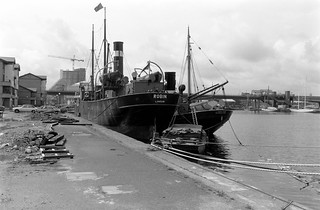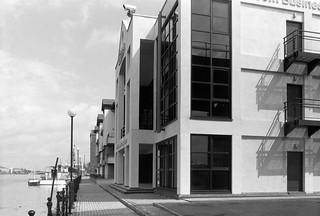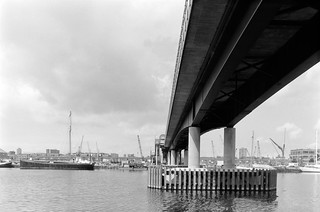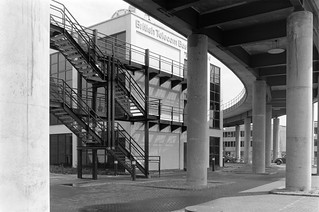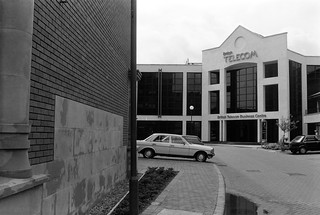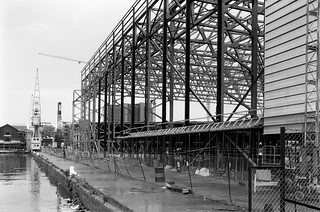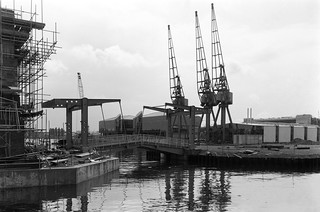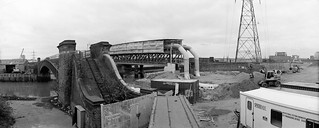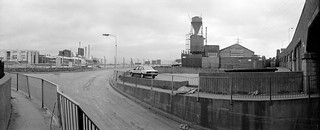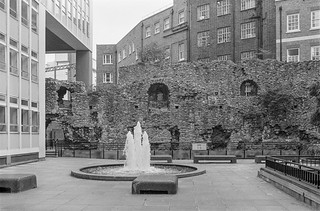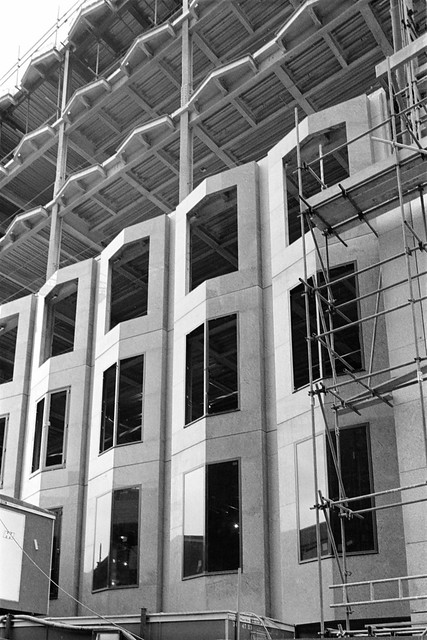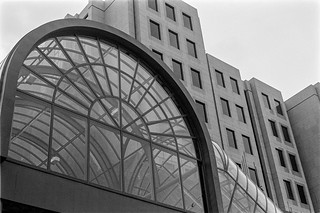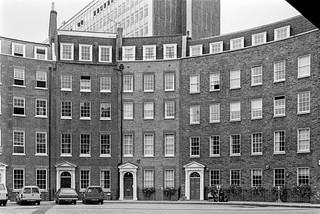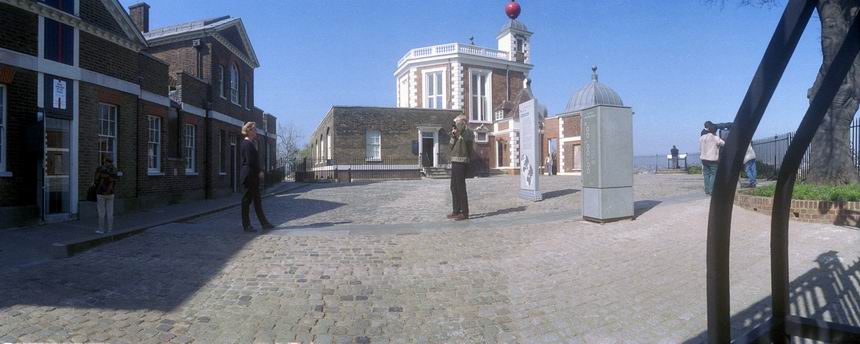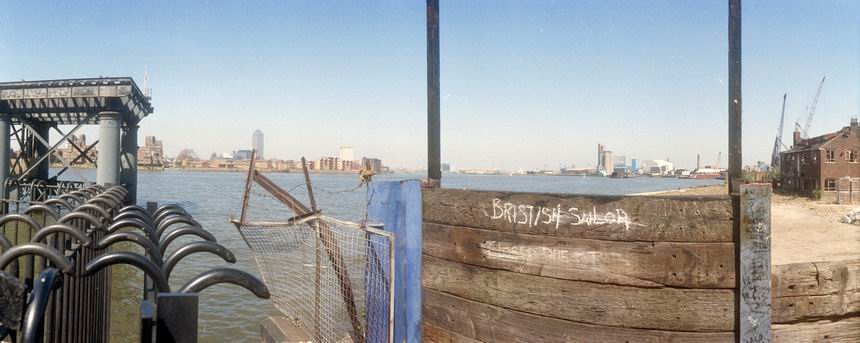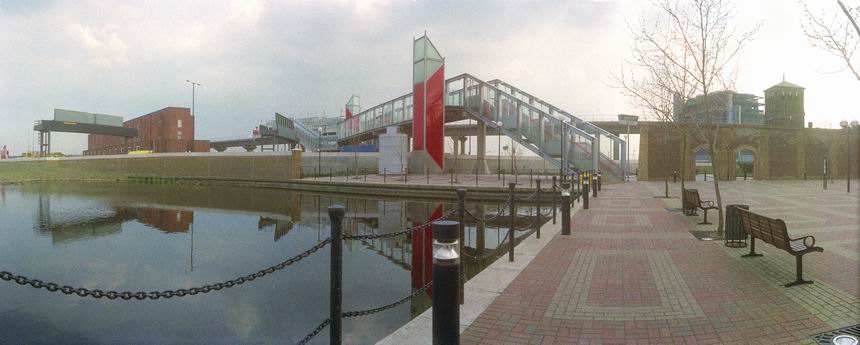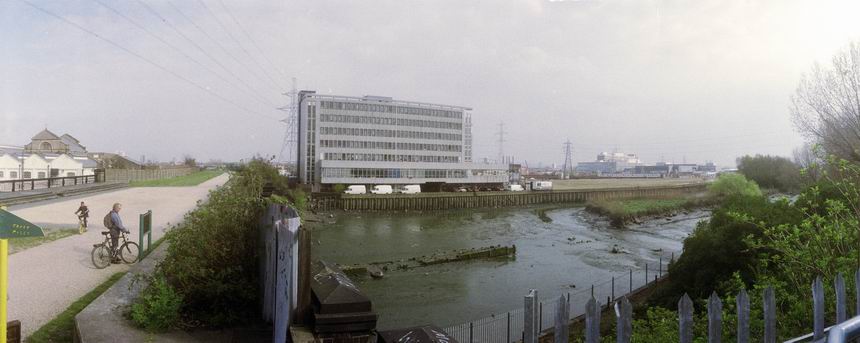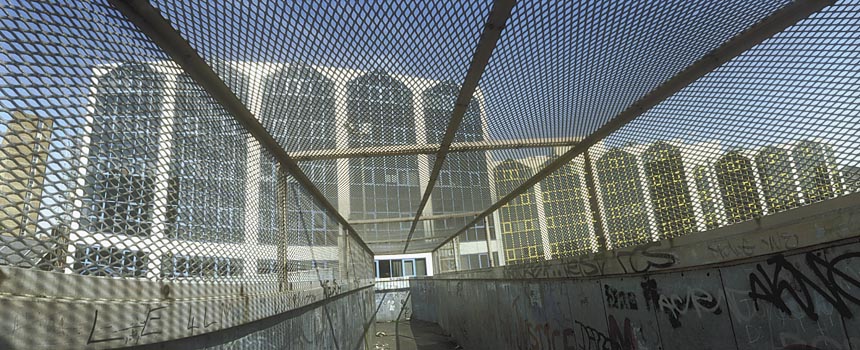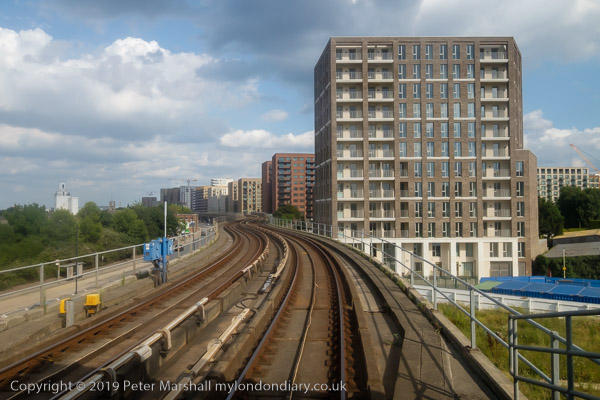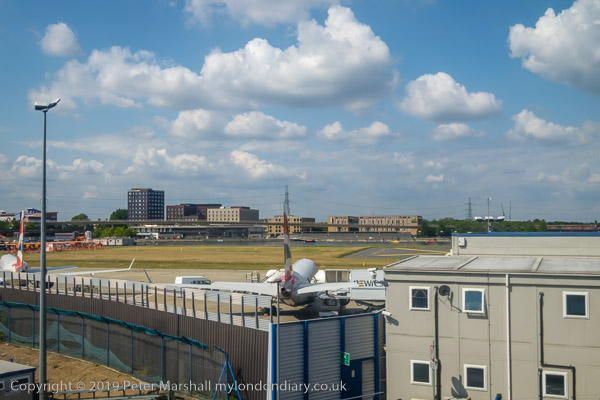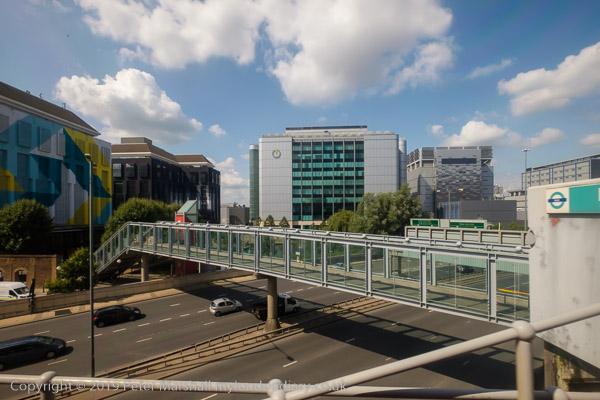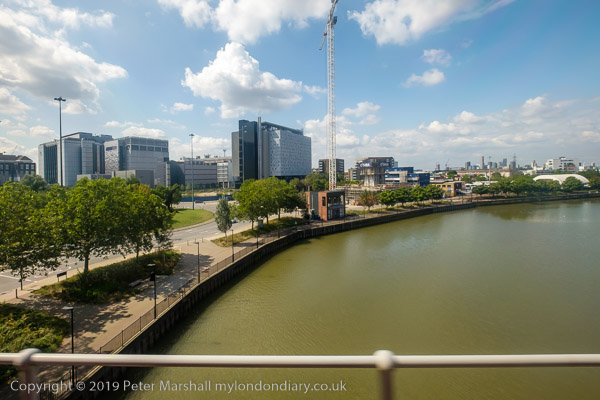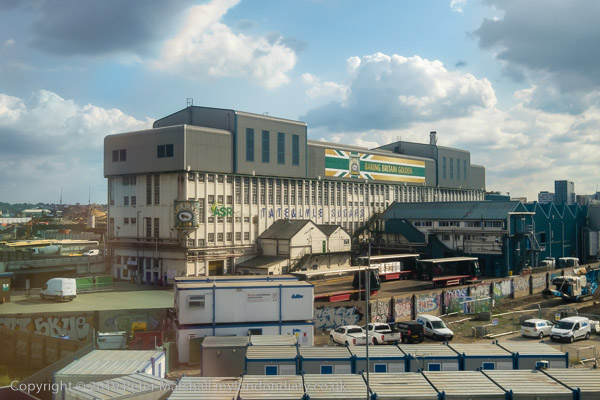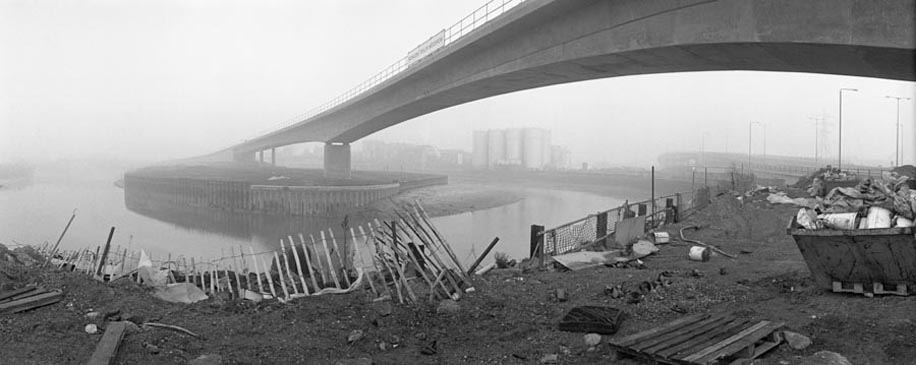SS Robin is a 350 gross ton steam coaster built by Mackenzie, MacAlpine & Co at their Orchard House Yard in Bow Creek in 1890 and the only complete Victorian steam ship in existence. She still has the original steam engine fitted in Dundee by Gourlay Brothers & Co.
In 1900 she was renamed Maria and spent the next 74 years working around Spain for several Spanish owners, and in 1966 some extensive alterations were made. When about to be scrapped in 1974 she was bought by the Maritime Trust, her original name restored and treated to an extensive restoration in Rochester before coming to St Katharine’s Docks in London and opened to the public as a part of their Historic Ships Collection. After this closed in 1986, along with several other vessels from the collection Robin was laid up here in the West India Docks. You can see the stern of the Yarmouth Steam Drifter Lydia Eva at the right.
In 2000 Robin was sold for £1 and later the SS Robin Trust was set up to restore the vessel, an expensive and lengthy process and eventually it was decided necessary to put the vessel on a pontoon. The SS Robin museum, theatre and educational centre is now in the Royal Victoria Dock.
Quay House, a three storey office block built in 1986-7 was occupied by BT. Empty for some years, planning permission was obtained in 2020 for the 40-storey Quay House waterfront development including a 400-bedroom hotel and 279 serviced apartments alongside dockside leisure facilities.
The Survey of London describes these low rise buildings as “high-tech ‘cabins’ or ‘Swiss chalets’, with light steel structures, covered with red, purple and blue-grey vitreous enamel panels, while the monopitch roofs are clad in aluminium” and says they were part of a large scheme for the area begun in 1981 and built in 1984-9.
I think this is now the site of 1 Bank Street, a 28 floor office block completed in 2019.
The front of the BT Business Centre on South Dock.
Taken from more or less the same place as the previous picture and that below, this is where the DLR crosses the South Dock of the West India Docks, looking towards Heron Quays station. It shows how little development there was here in 1988.
Looking back at the curve of the DLR around Quay house towards Marsh Wall.
“London River Man‘ John W Mills ARCA FRBS 1987. This sculpture salutes all London river workers – toshers – bargees – dockers – ale tasters – coalheavers – ferrymen” and is rather hidden now on Marsh Wall. It is rather less than lifesize. John Mills (b1933) is better known for his Whitehall memorial to the women of World War II.
This is Waterside, where these buildings, described as small-business apartments were built in 1985-6. They are still there, looking much the same, though probably for not much longer.
A final picture of the British Telecom Business Centre – and what was presumably its main entrance.
More from around the West India Docks in a later post. Click on any of the pictures to see larger versions of any of them in the album 1988 London Photos from where you can browse other images.
